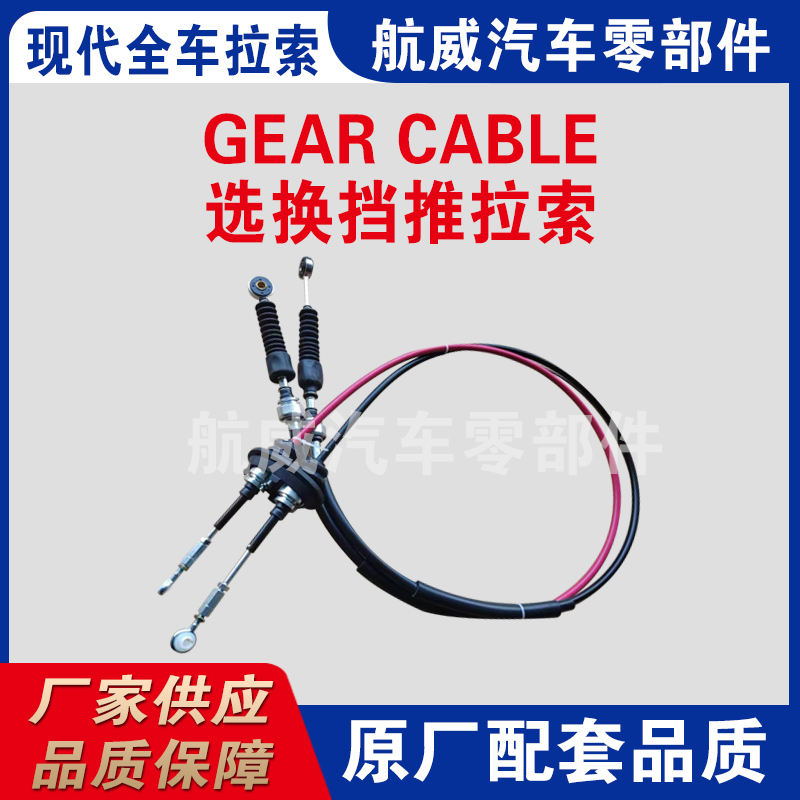carburetor cable
Understanding the Carburetor Cable A Key Component in Fuel Management
The carburetor cable plays a crucial role in the functioning of internal combustion engines, particularly in older vehicles and small engines that rely on carburetors rather than fuel injection systems. This cable is a vital component that connects the throttle pedal to the carburetor, allowing the driver to control the engine's power output by regulating the air-fuel mixture intake.
The Function of the Carburetor Cable
At its core, the carburetor cable serves as a mechanical link that facilitates the operation of the throttle. When a driver presses the accelerator pedal, the cable pulls on the throttle lever of the carburetor, which in turn opens the throttle plate. This opening allows more air, along with fuel, to enter the engine, resulting in increased power and acceleration. Conversely, when the pedal is released, the cable slackens, allowing the throttle plate to close and reduce the power output.
Proper functioning of the carburetor cable is essential for smooth engine performance
. If the cable becomes frayed, stiff, or disconnected, it can lead to sluggish acceleration or erratic engine behavior, making it difficult to control the vehicle effectively. Therefore, regular inspection and maintenance of the carburetor cable are important for ensuring optimal engine performance.Types of Carburetor Cables
Carburetor cables come in various types, suited for different applications and engine designs. They can be categorized into standard cables, which have a fixed length, and adjustable cables that allow for fine-tuning the throttle response. Some high-performance vehicles utilize specially designed throttle cables that offer enhanced sensitivity and smoother operation to meet the demands of racing or performance driving.
carburetor cable

When selecting a carburetor cable, it is crucial to ensure compatibility with the specific engine model. Different carburetors may require different cable configurations, including the length and connection types. Most automotive parts retailers provide detailed specifications and recommendations to help vehicle owners select the appropriate cable for their needs.
Installation and Maintenance
Installing a carburetor cable typically requires some mechanical know-how. It's important to follow the manufacturer's instructions carefully to ensure proper installation. A poorly installed cable can result in improper throttle operation, which could compromise safety. When installing the cable, it is also essential to check for any kinks, which can restrict movement, and ensure that all connections are secure.
Regular maintenance of the carburetor cable is also important. This includes checking for signs of wear, such as fraying, corrosion, or stiffness. Lubricating the cable periodically can help prevent these issues, ensuring smooth and reliable operation. If any damage is detected, it is advisable to replace the cable immediately to avoid any negative impact on vehicle performance.
Conclusion
The carburetor cable may seem like a small, simple component, but it plays an essential role in the efficiency and performance of an internal combustion engine. Whether it’s for a classic car, a motorcycle, or a small engine, understanding its function and ensuring proper maintenance can lead to a more reliable and responsive driving experience. By paying attention to this crucial link in the throttle system, vehicle owners can maintain their engines in peak condition, leading to better performance and enhanced safety on the road.
-
Upgrade Your Vehicle with High-Quality Handbrake CablesNewsNov.01,2024
-
Optimize Your Bike's Performance with Quality CablesNewsNov.01,2024
-
Enhance Your Vehicle's Performance with Quality Clutch ComponentsNewsNov.01,2024
-
Elevate Your Vehicle's Performance with Quality Throttle CablesNewsNov.01,2024
-
Elevate Your Vehicle's Performance with Quality CablesNewsNov.01,2024
-
Affordable Solutions for Your Cable NeedsNewsNov.01,2024
